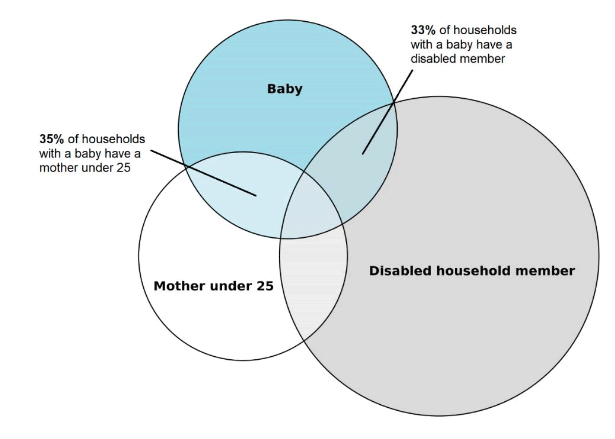Tackling child poverty delivery plan: fourth year progress report 2021-2022 - focus report on households with babies under one
Evidence about child poverty in households with a baby under one. The report presents the latest data on the child poverty targets and includes further evidence on the drivers of child poverty among this priority group.
Demographics – what we know about households with a child under one
Welcoming a baby into a family is usually marked by significant change for everyone in the household. It means adjusting to parenthood and navigating family life, and can range from juggling work and caring responsibilities, sharing logistics with partners and finding childcare arrangements that work. These challenges are often encountered for the first time. This is all on top of navigating the new role of parenthood and the responsibilities and logistical implications it can have. For those families already with children and welcoming a new baby into the family, change is also the norm. Family finances need to adjust and working patterns sometimes revisited. For some families, all of this change needs to be navigated with the additional pressure of financial challenges.
As with all families, those with a child under one, come from a range of different backgrounds and have a range of different characteristics and experiences. However, in terms of household characteristics, data shows that households with a baby under one are more likely to:
- be in poverty – as seen in previous chapter.
- be in in-work poverty. 32% of children in families with a baby in the UK who were in working households, were in relative poverty in 2017-20.[8] This compares to 25% of all children in working households.
- be in other priority family groups. Two thirds (68%) of children in households with a baby in relative poverty also fall under either one or two other priority family groups.[9] A third (35%) of children also have a mother aged under 25, a third (33%) are in a lone parent household, and a third (33%) live in a household with a disabled family member.
Sharing these various characteristics means that sometimes for families with a child under one their journey out of poverty is more complex and requires greater support and care (see Figure 1 for further details).

There are various factors that explain why families with a baby under one are at greater risk of poverty. These include:
- Cost of a baby. Research[10] has shown that the average cost (as of 2018) in the first month of the baby's life alone is around £500. Over the first year of having a baby, it increases to a total of approximately £11,500. Many families reported they did not anticipate many of the additional costs incurred.
- Maternity leave and pay policy. Statutory Maternity Pay can be paid for up to 39 weeks. However, this usually means a drop in salary for mothers. For those eligible, in the first 6 weeks, payment is 90% of their average weekly earnings. The remaining 33 weeks are paid at £156.66 or 90% of the mother's average weekly earnings.[11] More details in chapter '1. Income from employment'.
- Eligibility of maternity leave. There is no universal right to maternity leave in Scotland. There will be mothers not eligible for a variety of reasons, including those who are self-employed, or in volatile contracts. More details in chapter '1. Income from employment'.
- Working patterns and childcare. For those who decide to return to work within the first year of their baby's life, there is the added complexity of childcare. For many families, this means a reduction in working hours due to the affordability and accessibility of childcare. Reduced part-time contracts are mostly women.[12] This will in turn equate to less income from employment. Furthermore, for those who choose to go back to work within the first year, there is no funded Early Learning and Childcare (ELC) available. As such, unless families have the support from family or friends who are willing to help financially or provide free informal childcare, they would have to access private childcare at a significant cost.
Furthermore, evidence suggests that motherhood can be linked to experiences of domestic abuse, with pregnancy being a particular point of risk.[13] Mothers on the lowest incomes are far more likely to report experiencing abuse. This is likely to exacerbate some of the difficulties already faced by those in poverty.
However, there are some measures that can be particularly beneficial to families with a baby under one and this includes social networks in supporting their journey out of poverty. The qualitative interviews highlighted the importance of strong support networks for families with babies. Mostly, the main pillar of support came from grandparents and other family members. In many cases, family members provided strong emotional support and practical help with logistics by taking care of the baby. Others, offered financial support buying baby items like prams, cots, clothing, which was particularly helpful for parents who were primarily relying on social security. The biggest challenge for many parents, especially lone parents, concerned how pandemic restrictions meant that many normal sources of support were not available.
Even when the support was available, it was limited and mostly remote through telephone or video calls. The lack of face to face support meant that families felt they missed out on advice and help from healthcare professionals.
In the following chapters, this report looks in detail at the experiences of families with a baby under one across each of the three drivers of poverty. That is, income from employment (chapter 1), cost of living (chapter 2) and income from social security and benefits in-kind (chapter 3).
Contact
Email: socialresearch@gov.scot
There is a problem
Thanks for your feedback